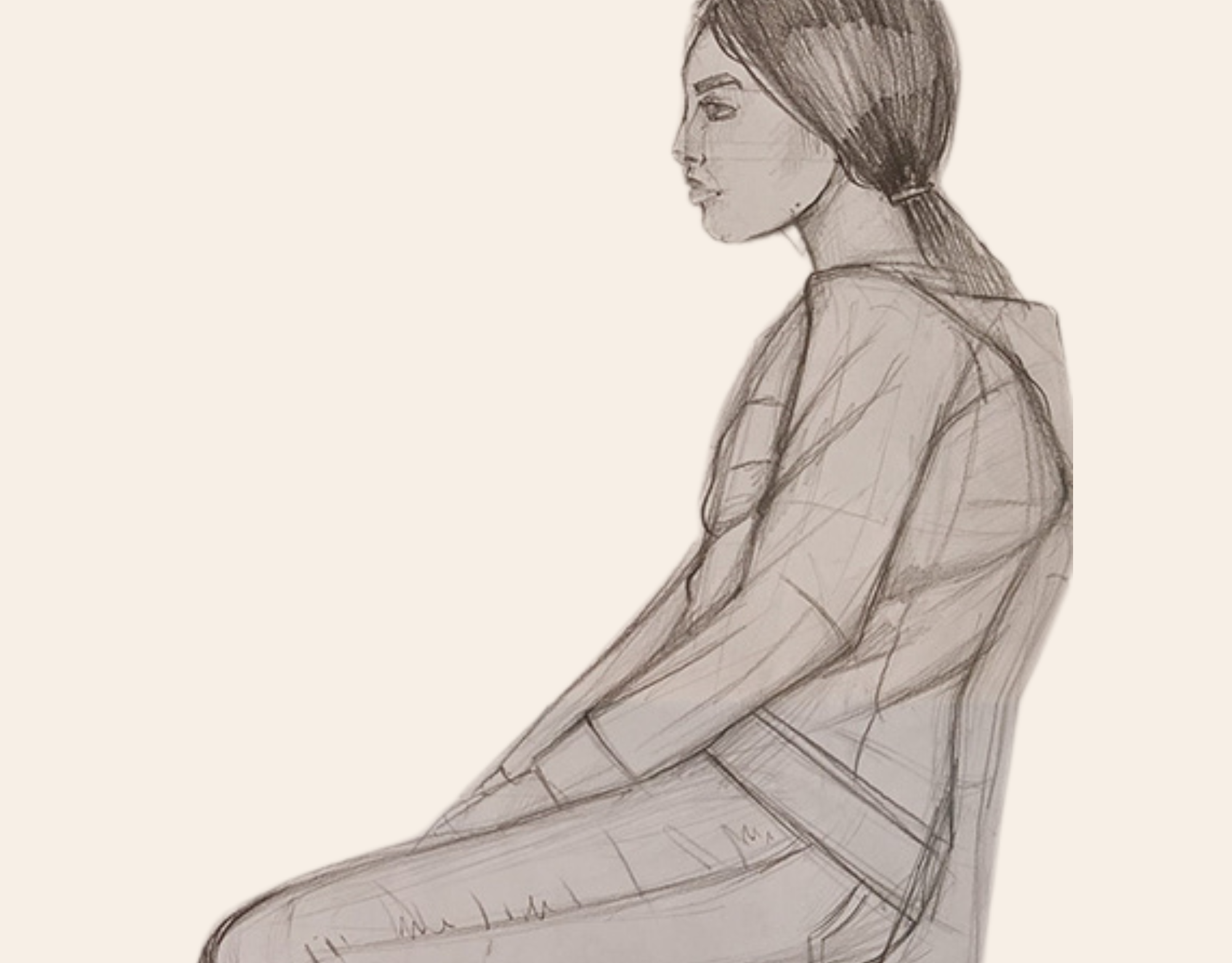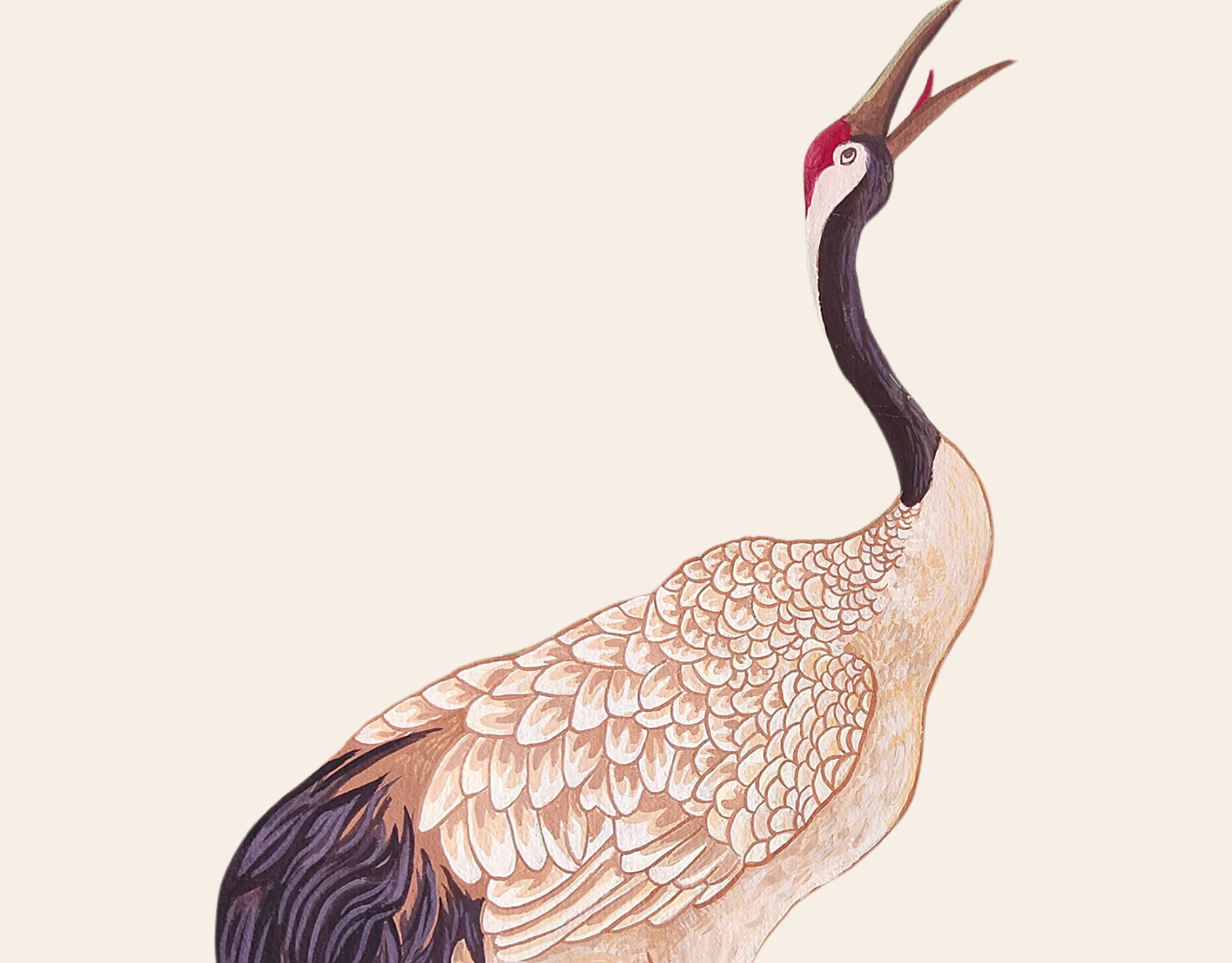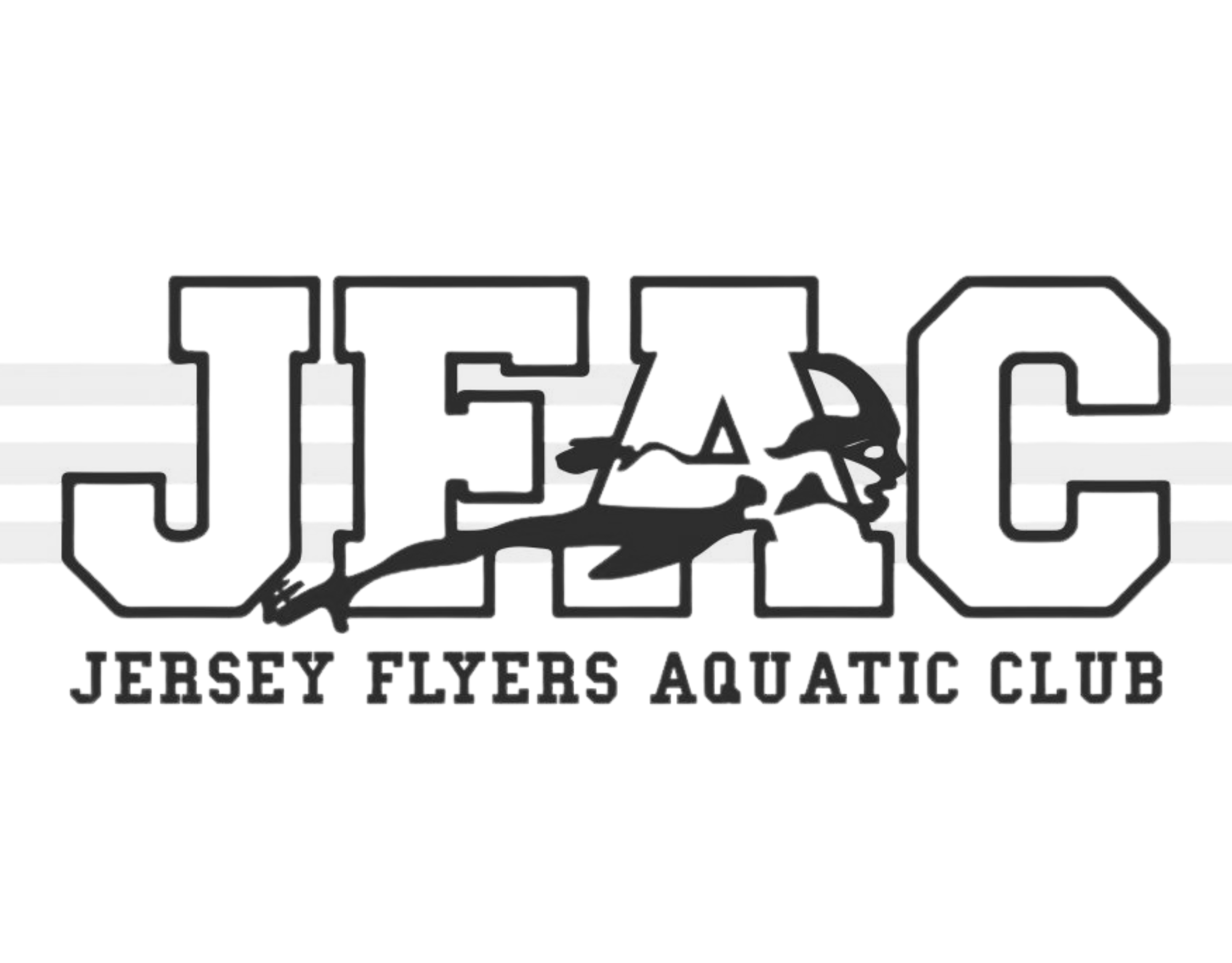Tezhip-Inspired Coffee Packaging
Inspiring Journey of Holy Scripts to Modern-Day Coffee Packaging
I created a visually and culturally meaningful design for Kahveji coffee packaging, inspired by the traditional art form of tezhip. Using motifs, colors, and shapes commonly used in tezhip. The design draws from the philosophy of tezhip, which emphasizes the importance of sourcing materials from their origin, like coffee beans, and elevating the beauty of everyday objects. I hope to see this design in homes and retail stores, carrying the tradition of tezhip into daily life.
All tezhip work presented on this page was created by Anisa Ozalp
Coffee Tezhip
What is Tezhip?
Tezhip is a breathtakingly beautiful art form that embodies the exquisite delicacy and intricate precision of Tezhip artists. With unparalleled attention to detail, Tezhip illuminates manuscripts and books with a stunning interplay of intricate icons and captivating patterns. Each stroke and curve is crafted with a profound sense of artistry as the artist masterfully navigates the blank page, transforming it into awe-inspiring beauty.
What is Saki?
What is Saki?
Saki is a cutting-edge technology manufacturer based in California that caters to the needs of tea and coffee aficionados. The company's flagship product, the Electric Samovar, has successfully revived a long-lost tea-drinking tradition, blending modern and conventional elements to create a unique consumer experience. Building on this success, Saki has expanded its product line to include state-of-the-art coffee machines catering to coffee connoisseurs' needs. By leveraging advanced technology and high-quality materials, Saki's coffee machines offer unparalleled performance and brewing precision, allowing users to enjoy a superior coffee experience with every cup.
What is Kahveji?
Kahveji Quadro
Kahveji (also spelled Kahveci, [kavedʒi], Arabic: قهوجي) is a Turkish and Arabic word meaning coffee producer. Kahveji is a newly launched ground coffee brand made in California. It sources its seeds from the mountains of Brazil and roasts, grinds, and packages them in its state-of-the-art facility in California.
Kahveji is an intriguing word with a rich etymological history dating back to Arabic. Kahveji is a Turkish and Arabic word derived from the Arabic word "qahwa," which means coffee. " Kahveji " refers to a coffee producer or someone producing and distributing coffee.
As a newly launched ground coffee brand, Kahveji is passionate about bringing the authentic flavors of coffee to consumers. The company sources its coffee beans from the mountains of Brazil, a region renowned for producing some of the finest coffee beans in the world. Once the beans are harvested, Kahveji uses state-of-the-art facilities in California to roast, grind, and package the coffee, ensuring the highest quality and freshness.
By drawing on the rich history and tradition of coffee production, Kahveji seeks to offer consumers a unique and authentic coffee experience that embodies the true spirit of coffee culture. As a company that is deeply committed to quality and excellence.
Tezhip-Inspired Design for Coffee Packaging
The principles of tezhip are rooted in the tradition of beautifying everything in life, including spiritual texts and objects. So, we asked ourselves, why not coffee packaging? The sacred book mentions, "And from the fruits of date palms and grapes, you take sweet juice and wholesome food. And there is certainly a sign in that for people who reflect" (16:67).
Coffee Tezhip
Art is not a separate entity from life and creation but an integral part. The symmetry and harmony in the designs used in tezhip are intended to reflect the order and balance of the universe. Tezhip aims to elevate the beauty of objects by creating intricate and exquisite designs, and the daily use of packaging cannot be separated from this.
I created a visually and culturally meaningful design that reflects the art and beauty of the tradition. To integrate tezhip into coffee packaging design, I drew inspiration from the art form's traditional motifs, colors, and shapes, such as coffee seed flowers, leaves, and roasted beans. I used geometric patterns, floral motifs, and elements commonly used in tezhip to create a unique design.
I also used a color scheme consistent with the tezhip tradition, such as shades of blue, green, red, and gold. Metallic or iridescent foils can also add a luxurious touch to the packaging design, referencing the traditional use of gold and silver in tezhip.
CİHANOĞLU: WHERE I LEARNED TEZHIP
CIHANOGLU COMPLEX
I began my journey learning Tezhip, also known as illumination and gilding, in 2021 at Cihanoğlu Külliye in the Köprülü District of Aydın. Külliye refers to a social complex that was common during the Ottoman Era. The building is an Ottoman Baroque style, with its square-plan units featuring masonry walls, wooden roofs, and an open courtyard with a low-arched door and rectangular window.
The Cihanoglu Complex is a significant architectural masterpiece built by the Cihanogullari family in the 18th century. This family was one of the most influential families in the region, and they played an essential role in the late Ottoman architecture in the area. The Cihanoglu Abdulaziz Kulliye, located in the Güzelhisar neighborhood in Aydin, is the most famous and recognized of the family's constructions, comprising a mosque, madrasa, çeşme-sebil (fountain made for charity), and sarnıç (reservoir).
The family has also built many water constructions in Aydin, which had over 200 çeşmes (public fountains) in the 17th century, according to Ottoman explorer Evliya Çelebi. The çeşme-sebils are a unique group of structures among the water constructions with an interesting architectural design. The Cihanoglu çeşme-sebil is one such example and is considered a significant architectural masterpiece.
The Westernization tendencies in Ottoman art were prevalent in the 18th and 19th centuries, where the baroque, rococo, and ampir styles were evident in small-scale water constructions, such as fountains and public fountains. These structures served practical purposes and contributed to the region's artistic and cultural heritage.
EXPLORING THE ART OF "TEZHIP" and TRACING ITS ORIGINS
I visited several museums and exhibitions for Tezhip art to conduct further research. Below are some of my photos from the Louvre Museum in Paris.

Louvre

Louvre Tezhip

Louvre Tezhip

Louvre Tezhip

Louvre Tezhip
PHOTOS OF Work in progress: Coffee-themed Tezhip motifs.

Coffee Tezhip Black White Drawing

Coffee Tezhip Drawing
Origin & TEZHIP PRINCIPLES
1️⃣ In the Illumination (Tezhip) philosophy of drawing, Artist cannot simply create a design without considering its origin. It is like sourcing coffee beans from their place of origin - it matters.
2️⃣ To create a Simple Composition, one must start with a motif at a given point and continue it along spiral lines without being restricted by strict rules.
3️⃣ Symmetrical compositions, on the other hand, come to life through straight or oblique lines that meet based on specific rules. In both cases, the shapes are always in contact with each other.
4️⃣ When it comes to flowers, they can only be placed in a free line. It is important to note that the flowers and leaves must always face the same direction when using motifs on spiral and curved lines.
5️⃣ The motifs should resemble the letter S, with the central hatai being central in the sunburst design on the S line. This type of design is called reverse symmetry since the flowers and leaves can be turned in the opposite direction.
6️⃣ Hatai (also called "Hatayi") is a traditional pattern used in tezhip, which is the art of illuminating manuscripts or decorating paper with gold or silver leaf and bright colors.
7️⃣ The figure in the border drawing diagram demonstrates the same feature: the branches emerging from a central hatai extend in opposite directions.
8️⃣ In essence, the Illumination drawing rules highlight the importance of understanding the origin of a design and following specific guidelines for creating beautiful, intricate compositions.
KAHVEJI PACKAGING DESIGN VARIATIONS
KAHVEJI PACKAGING 3D DESIGNS
Illustrations and icons
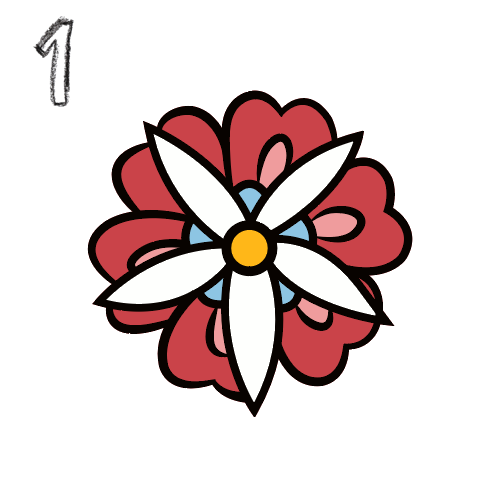
Red Coffee Flower Tezhip

Blue Coffee Flower Tezhip
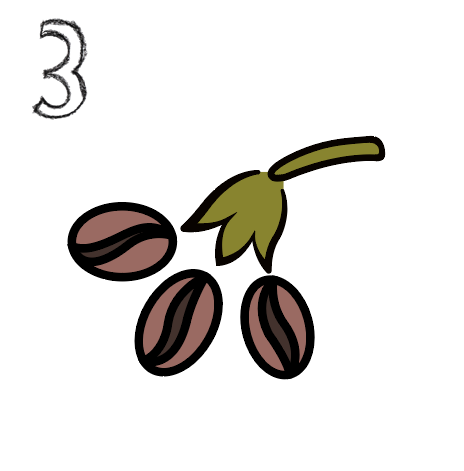
Coffee Seeds Tezhip

Coffee Flower Tezhip

Coffee Leaf Tezhip

Coffee Tezhip
You can also see the above illustrations of my design and their representations:
1️⃣ White Coffee Seed Flower with a red leaf background
2️⃣ White Coffee Seed Flowers with a blue leaf background
3️⃣ Roasted coffee beans on a branch
4️⃣ Tezhip motifs with roasted coffee beans
5️⃣ Coffee leaves
6️⃣ Main Tezhip coffee icon
I hope to see this design in your homes and retail stores. I believe It is important to carry traditions into our daily lives.
Coffee Tezhip
MINIMALIST DESIGN OPTIONS

White Coffee Tezhip Minimalist Design
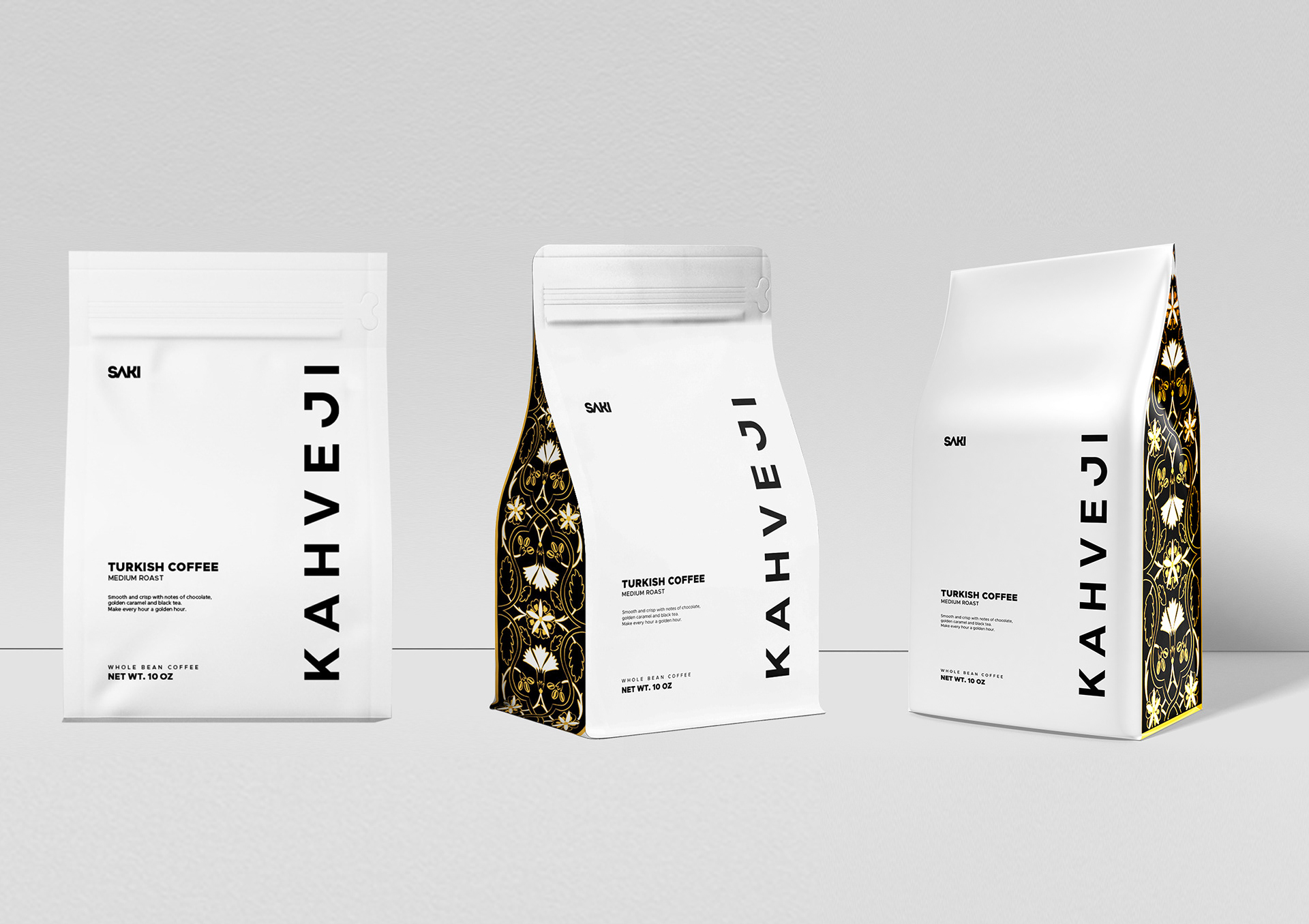
White Coffee Tezhip Minimalist Design 2

Coffee Tezhip Minimalist Design Brown

Coffee Tezhip Minimalist Design Brown 2

Coffee Tezhip Minimalist Design Black

Coffee Tezhip Minimalist Design Dark Brown
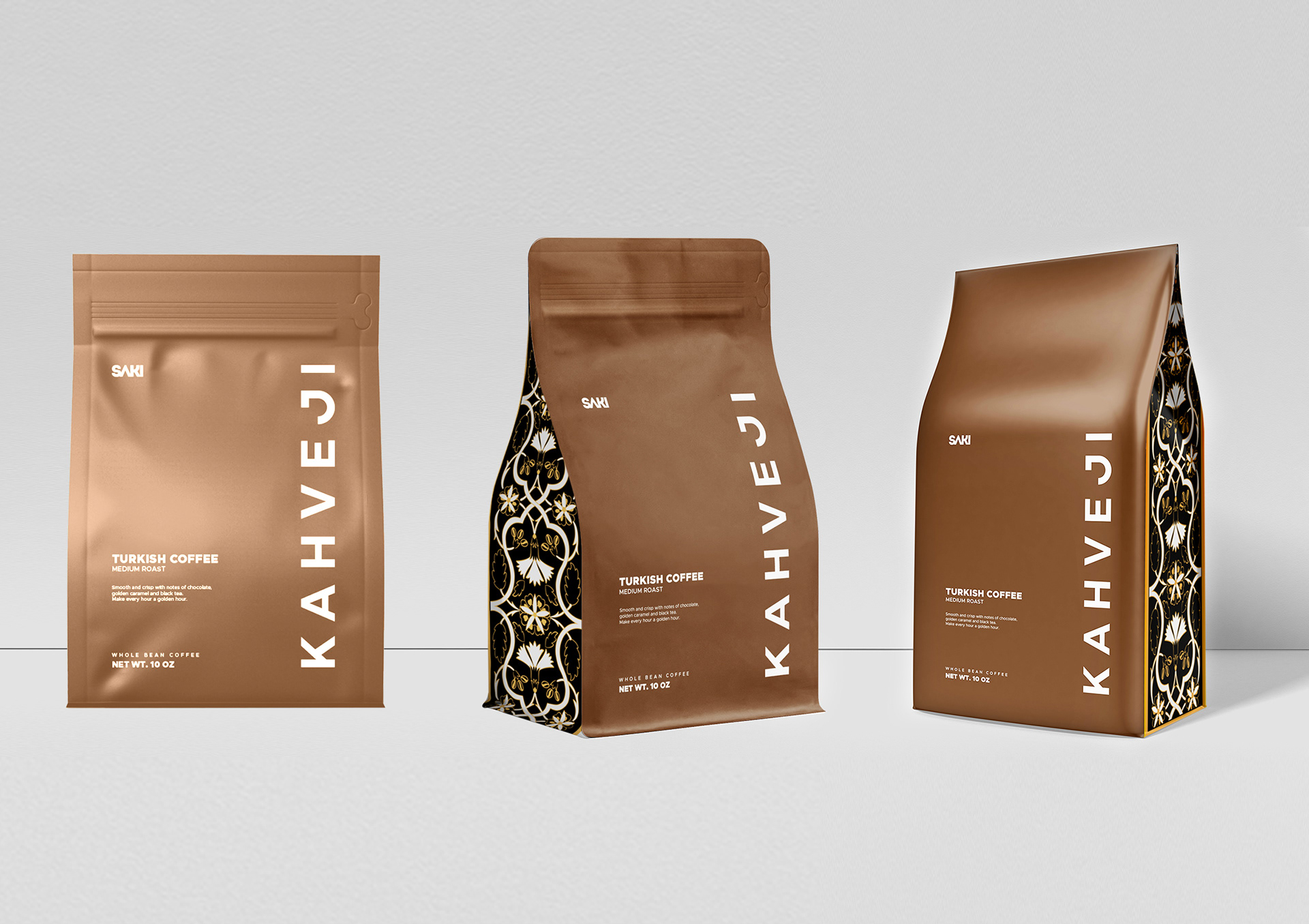
Coffee Tezhip Minimalist Design Light Brown

Coffee Tezhip Minimalist Design White
MORE MINIMALISTIC ALTERNATIVES

Coffee Tezhip Red Minimalist
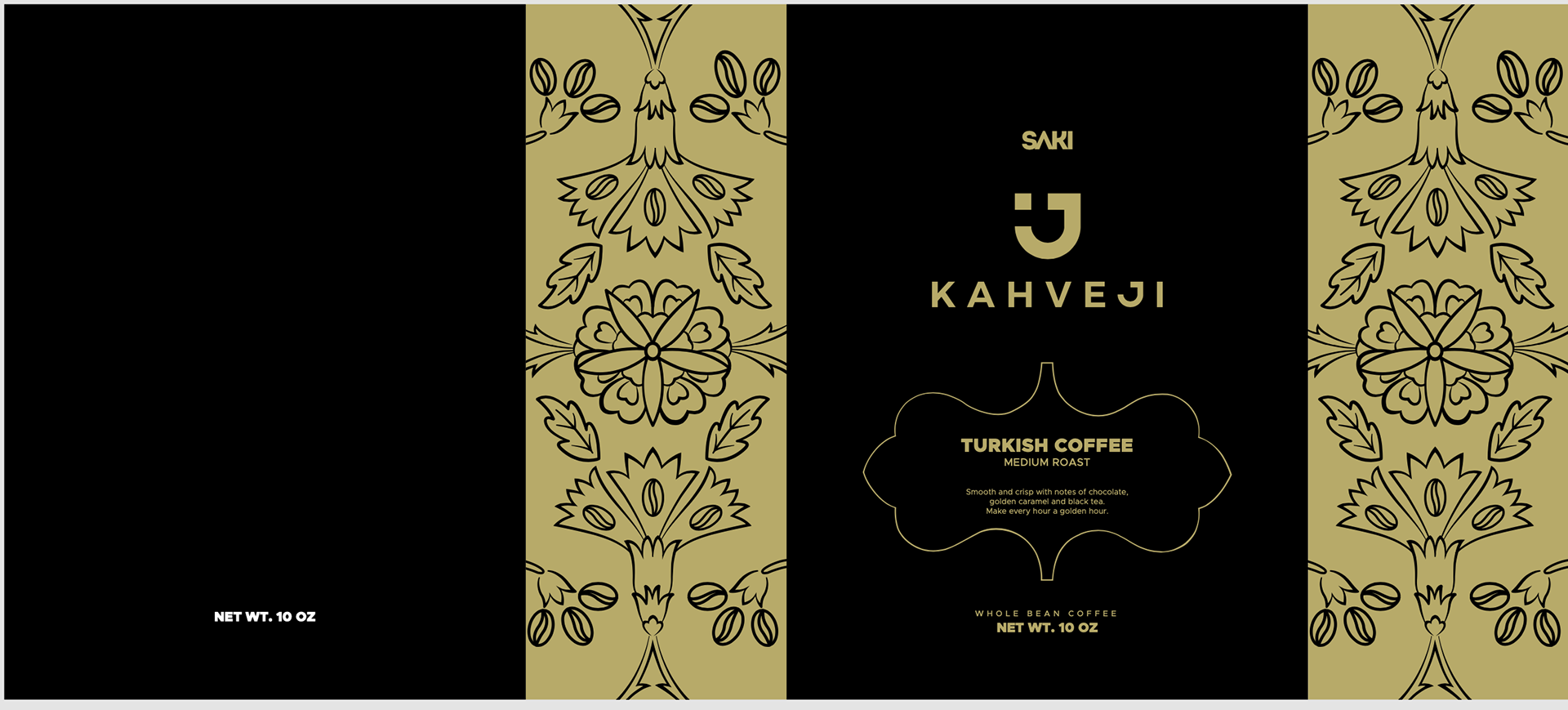
Coffee Tezhip Gold Minimalist
PROMOTIONAL ITEM DESIGNS
PROMOTIONAL COFFEE TEZHIP ITEMS
Bringing Tezhip Art to Life: Kahveji Collaboration Unveils Visually Striking Coffee Packaging Design
Embarking on an inspiring journey from holy scripts to modern-day coffee packaging, Anisa has created a visually and culturally meaningful design for Kahveji coffee packaging, drawing inspiration from the traditional art form of tezhip. Tezhip, known for its breathtaking beauty and intricate precision, has been used to illuminate manuscripts with captivating patterns and icons. Anisa's design incorporates traditional motifs, colors, and shapes commonly found in tezhip, reflecting the artistry and beauty of this tradition. By integrating tezhip into coffee packaging, the aim is to bring the elegance and charm of this ancient art form into homes and retail stores, offering a unique and visually striking package design that stands out.
Tezhip-Inspired Kahveji: Authentic Coffee Experience with Artistic Packaging
Kahveji, a California-based coffee producer, brings the tradition of Tezhip to life with their visually striking and culturally meaningful coffee packaging design. Inspired by the intricate precision of Tezhip, an ancient art form, Kahveji integrates traditional motifs, colors, and shapes into their packaging to offer coffee connoisseurs an authentic and visually captivating experience.
Drawing from the rich history of Turkish and Arabic coffee culture, Kahveji sources their premium coffee beans from the mountains of Brazil, renowned for their exceptional quality. In their state-of-the-art facilities in California, the beans are meticulously roasted, ground, and packaged to ensure the highest level of freshness and flavor.
The Tezhip-inspired design takes cues from the philosophy of beautifying everyday objects, much like the art form's focus on illuminating manuscripts. The packaging features intricate Tezhip motifs, geometric patterns, and floral elements, creating a symphony of colors that reflect the balance and harmony of the universe.
With Saki's cutting-edge coffee machines, Kahveji guarantees unparalleled performance and brewing precision, elevating the coffee experience to new heights. Saki, a technology manufacturer, has successfully merged modern and conventional elements in their products, reviving long-lost traditions like tea-drinking and now venturing into the world of coffee.
Embrace the artistry and elegance of Tezhip with Kahveji's Tezhip-inspired coffee packaging. From the moment you lay eyes on the captivating designs to the first sip of their exquisite coffee, Kahveji takes you on a sensory journey that merges tradition, culture, and exceptional taste.
Indulge in the authentic flavors of Kahveji's coffee, crafted with passion and dedication. Immerse yourself in the enchanting world of Tezhip and elevate your coffee experience with Kahveji's artfully designed packaging. Discover the beauty of tradition, brought to life in every cup.
COMMISSION
Commission Anisa for her expertise in tezhip-inspired designs, exploring the beauty of traditional art in modern contexts. Additionally, you can subscribe to her YouTube channel to witness her artistic journey firsthand. For further inquiries and collaborations, please reach out to Anisa.
MORE ON TEZHIP













